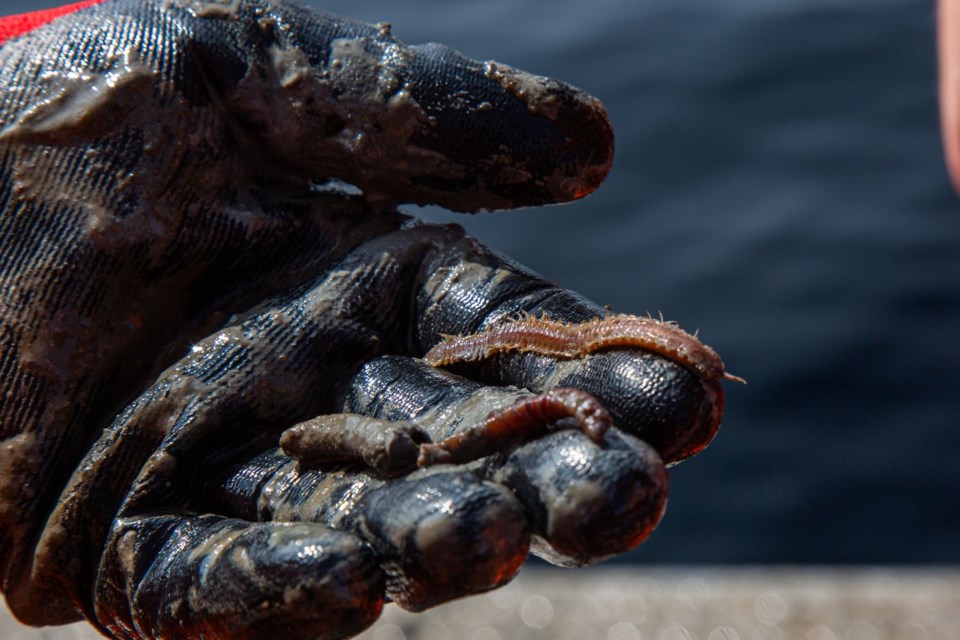MONTREAL — Far below the seals and belugas that dive gracefully through Quebec's Saguenay fiord, there are small creatures burrowing in the sea floor mud that scientists believe play a crucial role in mitigating the effects of climate change.
Earlier this month, scientists from the United Kingdom and Université Laval spent several days on the fiord's bumpy waters, grabbing samples from 200 metres below in a quest to track the life in the mud.
Dr. Adam Porter, a post-doctoral research fellow at the University of Exeter, said the sea can look like an "impenetrable blue" for those on the surface.
"I think mud is even more impenetrable because you get down to the bottom, you look at the sea floor, it can often look like there's not much going on," he said in a video interview. "But there's this whole world of life under the mud, and that is playing a really important role in keeping the planet healthy."
The research is part of the Convex Seascape Survey, a partnership exploring how the sea floor regulates climate through the sequestration of carbon, and the role that small animals in the mud play in keeping the planet healthy, Porter said.
Unofficially, he said the study has another title: "Trying to make mud sexy."
Rebecca Howman, a PhD student at Université Laval, said collecting the roughly 60 sea floor samples was complicated by the Saguenay fiord's tides, waves and current.
"You have to literally take a chunk of the floor off the ground, and considering that the Saguenay is 200 metres deep, that's quite a feat," she said in an interview. From the boat, the scientists used what she describes as a "big claw" to scoop samples, which were transferred to aquariums the scientists could use to study and experiment.
"It's very messy, very muddy, but also a good challenge and really quite fun," she said.
After they were pulled from the fiord's bottom, the samples were transferred to aquariums in Chicoutimi, Que., for study. Porter said the researchers put fluorescent sand on top of the mud in order to track the burrowing movements of the animals, some of which are too small to spot with the naked eye.
What emerged from the mud was a tiny world, teeming with life. "You can get worms, brittle stars, bivalves — so mussel-like organisms," Howman said. "So loads of different types of life live within the mud, which is interesting because you look at mud and you don't think that there's anything really going on."
While the creatures are small, she likened them to "little ocean gardeners" that help keep the sea floor healthy and ultimately support the whole marine ecosystem. "The way that they move the sediment changes the entire structure of the ecosystem," she said. "And it can support the ecosystem by changing nutrient fluxes — it oxygenates the sediment."
She said they also help store carbon in the sea floor by eating or trapping the organic matter that falls from above — a role that the researchers say could be crucial to mitigating the effects of climate change.
Porter described the floor of oceans and seas as "one of the largest carbon stores on Earth," holding more carbon than the rainforests.
The worry, he said, is that when the sea floor is disturbed through activities such as trawling, dredging or mining, "we are potentially releasing carbon and undoing any efforts that we're making to try and reduce our carbon emissions on land."
He hopes the five-year Convex Seascape Survey, which is taking place in countries around the world, will help researchers identify areas of the sea floor that are particularly important for carbon sequestration, and ultimately help convince decision-makers to protect them.
Many countries — including Canada — have signed a pledge to protect 30 per cent of the world's land and oceans by 2030. That includes the sea floor, Porter said.
This report by The Canadian Press was first published Aug. 24, 2025.
Morgan Lowrie, The Canadian Press



